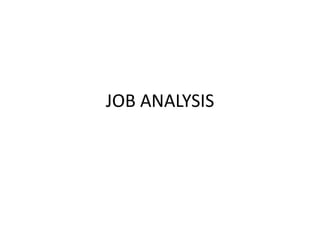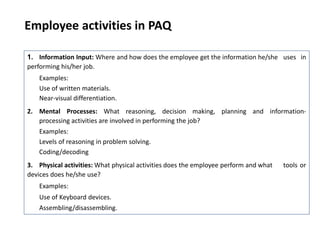The document provides information on job analysis including:
- Defining job analysis as the process of systematically investigating the tasks, duties, responsibilities, and skills required for a job.
- Methods for collecting job analysis data include interviews, questionnaires, observation, and logs/diaries.
- The outcomes of job analysis are job descriptions, which outline the duties and responsibilities of a role, and job specifications, which define the qualifications and skills required for a role.
- Job analysis is used for recruitment, selection, placement, training, performance management, and other human resource processes.



























